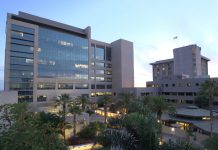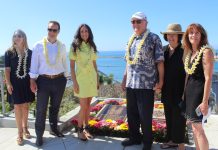Emergency rooms may soon be a little less busy tending to minor injuries as a newly implemented pilot project allows 911 patients to be transported to urgent care facilities instead of the ER.
During Tuesday’s study session, Newport Beach City Council members heard a presentation on the statewide pilot project about community paramedicine and the city’s role in the program.
Community paramedicine is a “community based model of healthcare that utilizes paramedics with expanded (or advanced) training to fill gaps in healthcare needs identified in the community,” explained Cathy Ord, Emergency Medical Services Division Chief for the NB Fire Department. It’s also been referred to as “mobile integrated healthcare.”
While other states have utilized the model, it’s brand new for California.
“It’s definitely history in the making,” Ord said. “It is a totally new role.”
The pilot project will test out the effectiveness of community paramedicine, with focus on three main concepts, through 13 different agencies across the state.
The Newport Beach Fire Department is part of the project sponsored by the Orange County Fire Chief’s Association. The OC program will also include Huntington Beach and Fountain Valley.
The three OC cities will focus on alternate destinations, meaning testing if paramedics with advanced training can safely triage and transport 911 patients with minor conditions to alternate facilities, such as urgent care centers, instead of emergency departments.
There are five other California cities also studying alternate destinations.
Other cities will focus on frequent 911 callers (identifying and connecting them with the appropriate care or service), discharged patients at risk for re-admission (identify those patients and make follow-up visits at home), and patients with chronic conditions (making periodic wellness checks and provide education).
Several of the council members expressed excitement and cautious optimism for the program. There were a few concerns and risks, but overall the project is worthwhile, they agreed.
“It’s another example of how progressive the city is,” said Mayor Ed Selich. “I think it’s a terrific idea.”
“This is where medicine needs to go,” said Councilman Keith Curry, who supported the idea but admitted there are people on both sides of this issue and potential concerns.
The pilot program may cause additional liability, Muldoon pointed out. He suggested looking into getting a waiver in the ambulance.
There is also the risk that the patient could decide later, after consenting to go to the urgent care and being treated, that they should have gone to the emergency room.
There are several challenges, Ord explained, because this type of study has never been done in the U.S.
“We have no clue whether patients are actually going to cooperate and want to go to the urgent care (centers),” she said.
Another challenge is funding, since there is no structure currently in place for transporting patients to the alternate centers.
The grand total cost for the OC pilot project is estimated at $272,285, all of which should be covered by grants.
The city approved grants earlier in the year for $16,600 from the California Healthcare Foundation and $50,685 from the Hoag Hospital Community Benefit Program. There are two more pending grants that will cover the balance – another one from the Hoag program for $125,000 and one from MemorialCare Foundation for $80,000.
The project started on Sept. 14. It will complete after two years or when 400 total patients have enrolled, including 150 or more actually being transported to urgent care.
The program is prompted by the Affordable Care Act, which aims to improve quality of care and patient satisfaction while reducing costs, Ord added. One way to help meet that goal is community paramedicine.
“This (in part) is what’s driving the need to change healthcare,” Ord said.
There is also an increased demand for healthcare services but a diminishing number of healthcare workers. Newport Beach had a 10 percent increase in the number of NBFD calls last year. This widening gap is what’s driving the need for change in California, she explained.
“In order to be sustainable, we have to think about and be creative about bringing in new ways of providing healthcare,” Ord said.
So, following the recommendation of a feasibility study on community paramedicine in California, the statewide pilot program was born.
The program requires that patients consent to participate and be transported to an alternate location, Ord explained.
“If they (the patient) felt that they needed to go to the emergency department and that’s where they wanted to go then we would transport them there,” she said.
If the patient agrees, they choose the center they prefer out of the five participating locations. A trained alternate destination paramedic must accompany the patient to the urgent care facility, she continued. If the physician at the urgent care evaluated the patient and determined they needed to go to the hospital, the paramedic would be on scene to transport the patient to the ER.
There is also very specific criteria for a patient to meet before paramedics will consider heading to urgent care instead of an emergency room. If it’s a simple laceration with controlled bleeding or an isolated fever and cough, the person can go to the alternate location.
If the patient has abnormal vital signs, is suspected of drug or alcohol intoxication, or has been involved in an alleged assault or criminal activity, or is currently in police custody, the paramedics will transport them to the emergency room. Minors and pregnant women will also be transported to the ER.
“It’s very controlled and very specific,” Ord said.
Patients that are paying members of the fire medics subscription service will still have their fees covered if they are taken to an alternate destination, Fire Chief Scott Poster later clarified.
After the project finishes there will be a wrap-up report, state recommendations, and possible legislative changes. It could take about five years before the law allows community paramedicine in California, Ord estimated.
For more information, visit emsa.ca.gov/Community_Paramedicine




